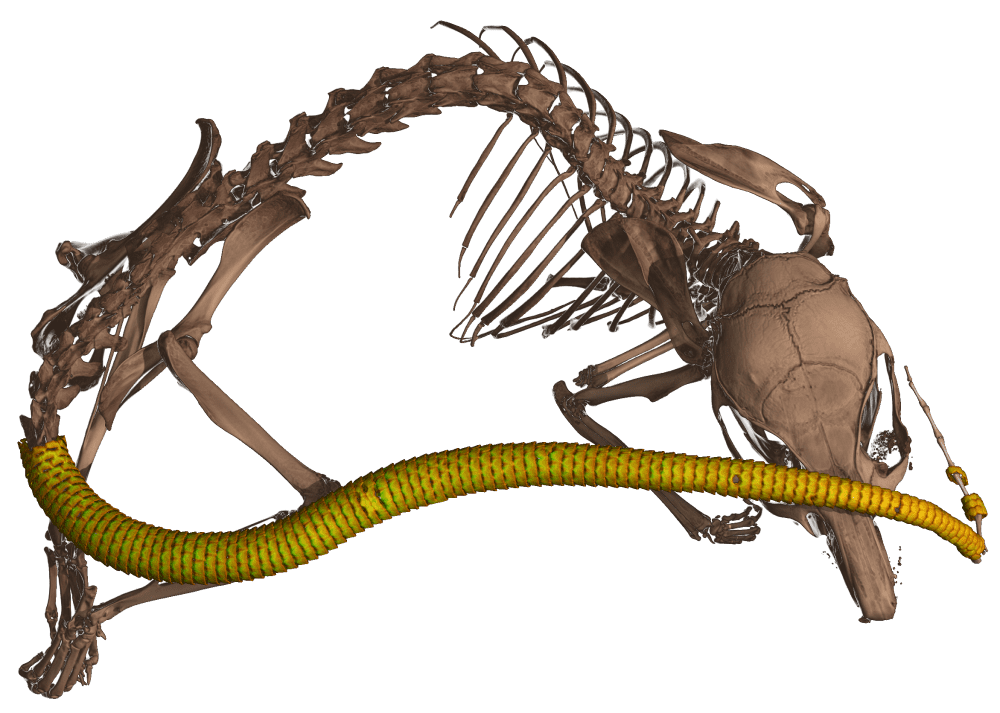The spiny mouse is one of nature’s great oddities and it just got even weirder, as researchers discovered that it has a peculiar adaptation on its tail that’s more commonly associated with reptiles. The skin of its tail is covered in bony armored plates known as osteoderms, and until now it was thought that the only living mammal to have this was the armadillo.
Bony armored plates on the tails of spiny mice indicate that this trait may have emerged several times in evolutionary history. This could be the result of a set of genes that can switch on and off, meaning not everyone who carries the genotype (the genetic stuff) expresses the phenotype (the physical characteristics).
Spiny mice in the genus Acomys are found across dry regions in Africa and the Middle East. From a distance they might look unremarkable, about the size of a standard mouse with a similar body shape and tail. However, they get their name for their bizarre spiky coat made up of stiff bristles that cover their bodies.
The spines act as a defense mechanism, similar to that of hedgehogs and porcupines, that makes it very difficult for predators to eat them. They’ve been a hot area of research for their remarkable regeneration abilities, able to undergo scar-free healing even in complex tissues such as skin and skeletal muscle.
Now the spiny mouse can add an armored tail to its list of unexpected talents, being the only known mammal on Earth (other than armadillos) to have osteoderms. The discovery was actually made by accident while Malcolm Maden of the University of Florida was studying spiny mice for their regeneration talents. Co-author Ed Stanley was working on a separate project called openVertebrate, CT scanning 20,000 museum specimens to gather high-resolution anatomical data.

CT scan of the osteoderms on the tail of a spiny mouse.
Image credit: Ed Stanley
“I had given Ed some of my spiny mice (Acomys) to scan as part of his project and, lo and behold, they had very rare bony plates in the skin of their tails – only seen before in living mammals in armadillos,” Maden said in a statement.
“I was working on spiny mice because of their amazing powers of regeneration for a mammal; they can regenerate skin, muscle, nerves, spinal cord, and perhaps cardiac muscle, so we had a colony of these rare creatures available. It was a classical serendipitous finding of two people in the same place working on different things.”
The emergence of osteoderms as a trait among several animal groups tells researchers that its something that has been lost and gained several times across evolutionary history.
“Osteoderms are present in this sub-family of rodents and nowhere else in living mammals except armadillos,” Maden explained. “They are absent in birds, frequent in reptiles – think of dinosaurs and crocodiles – and infrequent in frogs. This means that they can be lost and re-evolved time and time again in animals, and this has happened at least 19 times.”
Were you to look at the tail of a spiny mouse it might not look all that different, but what sets the osteoderms apart from other skin features is that they’re made of bone. This differs from mammalian traits like the scales you find on pangolins, which are made of keratin.
The researchers suspect regulatory genes may have a role to play in the genetic activity that sees osteoblasts made in place of keratin, and hope next to manipulate this so they can make “an armor-plated lab mouse.”
Now wouldn’t that be something.
The study is published in iScience.
Source Link: Spiny Mice Found To Have A Rare Trait Only Seen In One Other Living Mammal